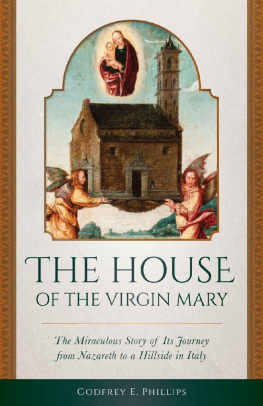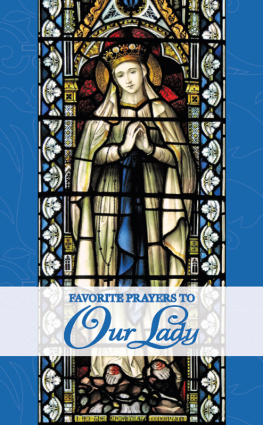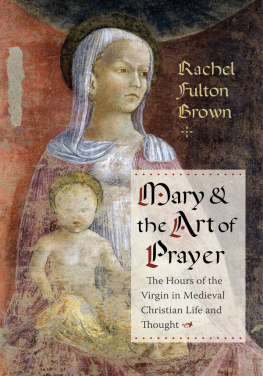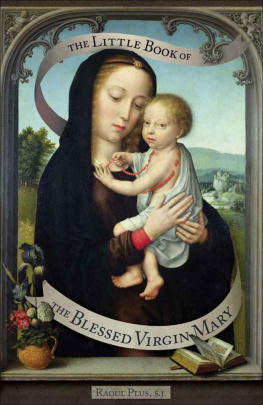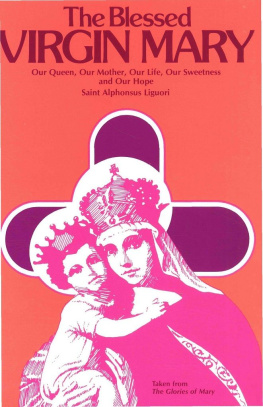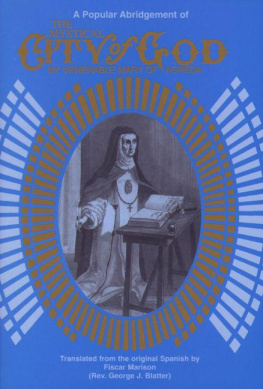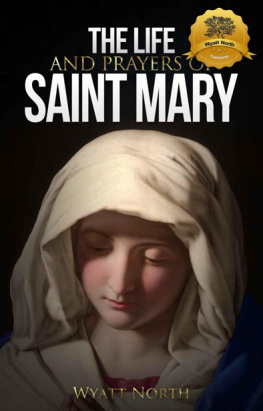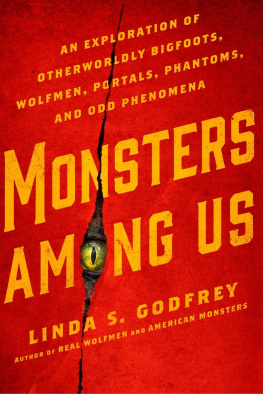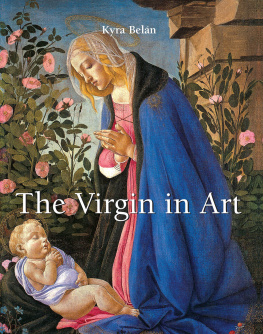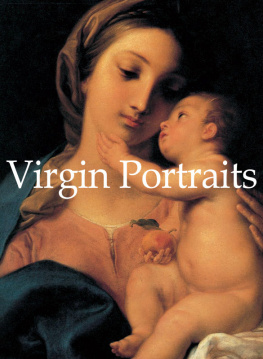Godfrey E. Phillips - The House of the Virgin Mary
Here you can read online Godfrey E. Phillips - The House of the Virgin Mary full text of the book (entire story) in english for free. Download pdf and epub, get meaning, cover and reviews about this ebook. year: 2017, publisher: Sophia Institute Press, genre: Detective and thriller. Description of the work, (preface) as well as reviews are available. Best literature library LitArk.com created for fans of good reading and offers a wide selection of genres:
Romance novel
Science fiction
Adventure
Detective
Science
History
Home and family
Prose
Art
Politics
Computer
Non-fiction
Religion
Business
Children
Humor
Choose a favorite category and find really read worthwhile books. Enjoy immersion in the world of imagination, feel the emotions of the characters or learn something new for yourself, make an fascinating discovery.
- Book:The House of the Virgin Mary
- Author:
- Publisher:Sophia Institute Press
- Genre:
- Year:2017
- Rating:4 / 5
- Favourites:Add to favourites
- Your mark:
- 80
- 1
- 2
- 3
- 4
- 5
The House of the Virgin Mary: summary, description and annotation
We offer to read an annotation, description, summary or preface (depends on what the author of the book "The House of the Virgin Mary" wrote himself). If you haven't found the necessary information about the book — write in the comments, we will try to find it.
The House of the Virgin Mary — read online for free the complete book (whole text) full work
Below is the text of the book, divided by pages. System saving the place of the last page read, allows you to conveniently read the book "The House of the Virgin Mary" online for free, without having to search again every time where you left off. Put a bookmark, and you can go to the page where you finished reading at any time.
Font size:
Interval:
Bookmark:
Godfrey E. Phillips
The House of the
Virgin Mary
The Miraculous Story of Its Journey
from Nazareth to a Hillside in Italy
SOPHIA INSTITUTE PRESS
Manchester, New Hampshire
Copyright 2017 by John L. Barger
The House of the Virgin Mary was originally published under the title Loreto and the Holy House: Its History Drawn from Authentic Sources (London: R. and T. Washbourne, 1917). The 1917 edition from which this new work is derived contained a number of anomalies and not a few errors of detail about the sources of the readings contained in it. In this new 2017 edition we have sought, where possible, to remedy those deficiencies. We apologize for any new problems our efforts may have introduced into this work.
Printed in the United States of America. All rights reserved.
Cover design by Coronation Media.
On the cover: public-domain, anonymous, sixteenth-century painting, Die berfhrung des Hauses der Maria nach Loreto .
No part of this book may be reproduced, stored in a retrieval system, or transmitted in any form, or by any means, electronic, mechanical, photocopying, or otherwise, without the prior written permission of the publisher, except by a reviewer, who may quote brief passages in a review.
Sophia Institute Press
Box 5284, Manchester, NH 03108
1-800-888-9344
www.SophiaInstitute.com
Sophia Institute Press is a registered trademark of Sophia Institute.
Library of Congress Cataloging-in-Publication Data
Names: Phillips, Godfrey E. (Godfrey Edward), 1878-1963, author.
Title: The house of the Virgin Mary : the miraculous story of its journey
from Nazareth to a hillside in Italy / Rev. Godfrey E. Phillips.
Other titles: Loreto and the Holy House
Description: Manchester, New Hampshire : Sophia Institute Press, 2017. | The
House of the Virgin Mary was originally published under the title Loreto
and the Holy House: Its History Drawn from Authentic Sources (London: R.
and T. Washbourne, 1917). | Includes bibliographical references.
Identifiers: LCCN 2017015757 | ISBN 9781622824489 (pbk. : alk. paper) ePub ISBN 9781622824496
Subjects: LCSH: Mary, Blessed Virgin, Saint Shrines Italy Loreto. | Santa
Casa (Loreto, Italy) | Loreto (Italy)Buildings, structures, etc.
Classification: LCC BX2321.L7 P49 2017 | DDC 263/.04245671 dc23 LC record available at https://lccn.loc.gov/2017015757
To the Right Reverend Father in Christ
Richard, Lord Bishop of Middlesbrough,
by whose side the writer has been privileged to kneel
within the sacred walls that once were
the earthly home of Jesus, Mary, and Joseph
Contents
Appendix:
Preface
In reply to a petition made to him by the bishops of the Province of Piceno, in which Loreto stands, our Holy Father Pope Benedict XV has issued a decree, dated April 12, 1916, ordering the Feast of the Translation of the Holy House to be henceforth observed each year, on the 10th of December, in all the dioceses and religious congregations of Italy and the adjacent isles. Moreover, by the same decree he grants permission for the extending of the festival to all other dioceses and religious congregations, on its being applied for by the ordinaries.
The Pontiff expressly grounds the granting of this favor on the acknowledged preeminence of the Loreto Sanctuary, it being, as the preamble states, the House itself translated from Palestine by the ministry of Angels in which was born the Blessed Virgin Mary, and in which the Word was made flesh.
In view of this decisive pronouncement of the reigning Pontiff as to the peculiar sanctity of the Loreto Shrine, it is hoped that the following account of that peculiarly sacred shrine and of its wondrous history, on which the writer has been engaged for several years, will be welcomed by many, and especially by those to whom the attacks of critics on the Holy House have given pain. The groundlessness of those attacks, and the solidity of the foundation on which the Loreto tradition rests, are here, he trusts, made plain.
It was a special encouragement to him in his pursuance of the work to receive, through his superior, the blessing on it of the late saintly Pope Pius X, a few weeks before his death.
In obedience to the decrees of Pope Urban VIII, he unreservedly submits what he has written to the judgment of the Holy See, especially with reference to the mentioning of any occurrence as miraculous.
Acta Apostolicae Sedes (Citt del Vaticano, 1916), June 7, 1916, 179.Chapter 1
A Catholics Attitude toward Loreto
We know not how better to open the subject of the following pages than by setting before the reader the following extracts from two letters of Cardinal Newman, which were addressed by him in January 1848 to Henry Wilberforce, immediately after his own return from Rome, where he had been ordained a priest and had become an Oratorian.
What took us to Bologna [wrote the future Cardinal] was that we went round by Loreto. We went there to get the Blessed Virgins blessing on us. I have ever been under her shadow, if I may say it. My College was St. Marys and my Church; and when I went to Littlemore, there, by my own previous disposition, Our Blessed Lady was waiting for me. I went to Loreto with a simple faith, believing what I still more believed when I saw it. I have no doubt now. If you ask me why I believe, it is because everyone believes it at Rome; cautious as they are and skeptical about some other things. I believe it, then, as I believe that there is a new planet called Neptune or that chloroform destroys the sense of pain. I have no antecedent difficulty in the matter. He who floated the Ark on the surges of a world-wide sea and enclosed in it all living things, who has hidden the terrestrial paradise, who said that faith might move mountains, who sustained thousands for forty years in a sterile wilderness, who transported Elias and keeps him hidden till the end, could do this wonder also. And in matter of fact we see all other records of our Lord and His Saints gathered up in the heart of Christendom from the ends of the earth as Paganism encroached on it (i.e., His relics). St. Augustine leaves Hippo, the prophet Samuel and St. Stephen leave Jerusalem, the crib in which our Lord lay leaves Bethlehem with St. Jerome, the Cross is dug up, St. Athanasius goes to Venice. In short, I feel no difficulty in believing it, though it may be often difficult to realize .Such, then, was Cardinal Newmans attitude with reference to the belief in the miraculous translation of the Holy House, and in that same attitude, we are assured, did he continue to the end.
It is true, indeed, that his biographer has thought well to append to the letters above quoted a note to the effect that when they were written the recent criticism as to the history of the Holy House was unknown. Many, however, we feel sure, will agree with us in thinking that, in thus following the Catholic instinct that he had imbibed so strongly with the Faith, and in quietly accepting the pronouncements of the Pontiffs, Newman was really following much safer guidance than any that the modern criticism could have offered. Though strongly opposed to exaggerated ways of speaking on the subject, it was the cardinals belief, as his same biographer admits, that the pietas fidei should prompt to internal submission beyond the sphere covered by strictly infallible decisions, and it must indeed be evident that our belief in Gods guidance of the Holy See cannot be restricted simply to occasions as comparatively rare as those indicated in the Vatican Decree.
When, therefore, in a case such as that before us we find Pontiff after Pontiff encouraging in every way the belief in the miraculous translation while the same belief, moreover, has been rapturously adopted by a host of saints, including even Doctors of the Church it seems impossible to think that an error could have been allowed by God to receive such authoritative sanction.
Next pageFont size:
Interval:
Bookmark:
Similar books «The House of the Virgin Mary»
Look at similar books to The House of the Virgin Mary. We have selected literature similar in name and meaning in the hope of providing readers with more options to find new, interesting, not yet read works.
Discussion, reviews of the book The House of the Virgin Mary and just readers' own opinions. Leave your comments, write what you think about the work, its meaning or the main characters. Specify what exactly you liked and what you didn't like, and why you think so.

